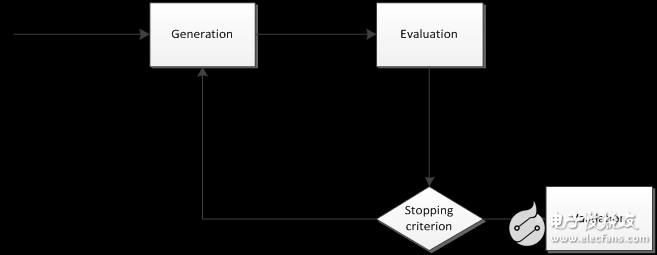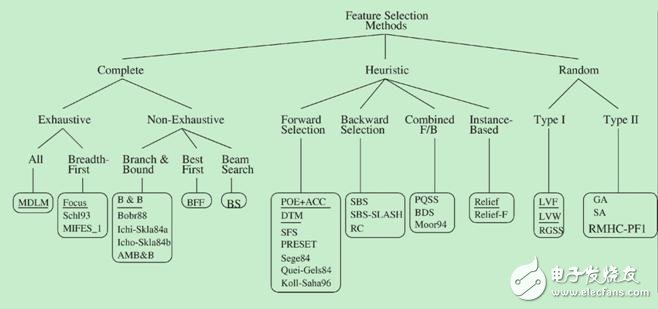( 1) What is feature selection?
Feature SelecTIon, also known as Feature Subset SelecTIon (FSS), or Attribute SelecTIon, refers to selecting a feature subset from all features to make the constructed model better.
(2) Why do feature selection?
In the practical application of machine learning, the number of features is often more, and there may be irrelevant features. There may also be interdependencies between features, which may lead to the following consequences:
The more the number of features, the longer it takes to analyze features and train the model.
The more the number of features, the more likely it is to cause a “dimension disasterâ€, the more complex the model will be, and its ability to promote will decline.
Feature selection can eliminate irrelevant or redundant features, thereby reducing the number of features, improving model accuracy, and reducing runtime. On the other hand, selecting truly relevant features simplifies the model and makes it easy for researchers to understand the process of data generation.

2.1 General Process of Feature Selection The general process of feature selection can be represented by Figure 1. Firstly, a feature subset is generated from the feature set, and then the feature subset is evaluated by the evaluation function. The evaluation result is compared with the stopping criterion. If the evaluation result is better than the stopping criterion, the next group is continued. Feature subsets, continue feature selection. The selected subset of features is generally also verified for validity.
In summary, the feature selection process generally includes a production process, an evaluation function, a stop criterion, and a verification process.
(1) GeneraTIon Procedure
The generation process is the process of searching for a subset of features and is responsible for providing a subset of features for the evaluation function. There are several ways to search for feature subsets, which are covered in Section 2.2.
(2) Evaluation function
The evaluation function is a criterion for evaluating the degree of goodness of a feature subset. The evaluation function will be introduced in section 2.3.
(3) Stopping Criterion
The stop criterion is related to the evaluation function, generally a threshold value, and the search can be stopped when the evaluation function value reaches this threshold.
(4) Validation Procedure
Verify the validity of the selected feature subset on the validation data set.

Figure 1. Process of feature selection (M. Dash and H. Liu 1997)
2.2 Generation Process The production process is the process of searching for feature subspaces. The search algorithm is divided into three categories: Complete Search, Heuristic, and Random Search, as shown in Figure 2.

Figure 2. Generation process algorithm classification (M. Dash and H. Liu 1997)
The following is a brief introduction to common search algorithms.
2.2.1 Complete Search Complete search is divided into two categories: Exhaustive and Non-Exhaustive.
(1) Breadth First Search
Algorithm Description: Breadth-first traversal of feature subspaces.
Algorithm evaluation: enumerates all the feature combinations, belongs to the exhaustive search, the time complexity is O(2n), and the practicability is not high.
(2) Branch and Bound search (Band and Bound)
Algorithm Description: Add branch boundaries based on exhaustive search. For example, if it is concluded that some branches are unlikely to search for solutions that are better than the best solution currently found, then these branches can be clipped.
(3) Directional Search (Beam Search)
Algorithm Description: First select the N highest-scoring features as feature subsets, add them to a priority queue that limits the maximum length, take the highest-scoring subset from the queue each time, and then exhaustively add a feature to the subset. All feature sets generated afterwards are added to the queue.
(4) Best First Search
Algorithm Description: Similar to directed search, the only difference is that the length of the priority queue is not limited.
Application: Automobile Wire Harness
Place of Origin: Dongguan, China (Mainland)
Connector: Molex, JST, TYCO, AMP, JAM, KET,Amphenol, Wago,Weidmuller, Phoenix,
Wires & Cables: UL, VDE standards
Gauge: AWG 28 to AWG 16
Length: Customized
Inspection: 100% inspection before delivery
Certification UL, IATF16949, CE
We can provide first price for products produced in our factory; for sourcing products,we can also provide most competitive price because we have
large relationship among our friend factory.
Automotive Wiring Harness,Auto Wiring Harness,Universal Automotive Wiring Harness,Effect Assurance Cable Wire Harness
Dongguan YAC Electric Co,. LTD. , https://www.yacentercn.com